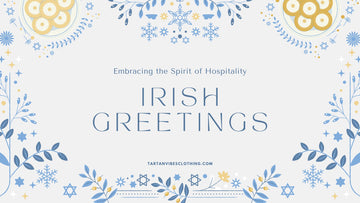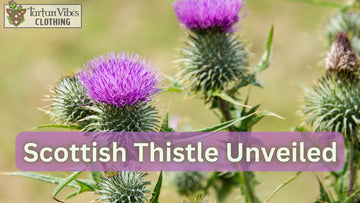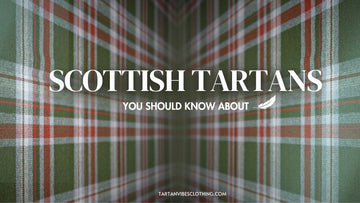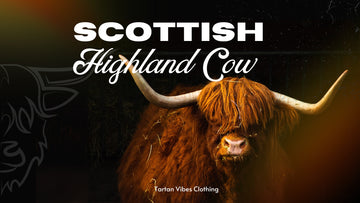Table of Content
1. Introduction to Irish Greetings
Irish greetings reflect the warmth and friendliness ingrained in the country's culture. Traditional Irish greetings vary from casual encounters among friends to formal business settings. In Ireland, greetings often involve handshakes, eye contact, and genuine smiles. Additionally, the Irish language adds a unique touch to greetings, with phrases like "Dia dhuit" and "Dia is Muire dhuit."
Understanding the cultural nuances of Irish greetings is essential for effective social interactions.This article will explore traditional and Gaelic greetings, common phrases, and the significance of gestures, providing insights into the rich social customs of Ireland .
1.1 Importance of Irish greetings in Ireland culture

Irish greetings hold a profound significance in the Irish culture, serving as more than just verbal exchanges. These warm and inviting salutations play a pivotal role in fostering a sense of community, hospitality, and connection among the Irish people. Irish greetings are not mere pleasantries; they are an essential expression of respect and acknowledgment. Furthermore, Irish greetings contribute to the renowned Irish friendliness and openness. In a culture where interpersonal relationships are highly valued, these greetings act as a bridge, inviting individuals into a shared space of conversation and camaraderie.
Irish greetings also play a role in rituals and social gatherings, setting the tone for interactions and creating an inclusive atmosphere. Whether meeting someone for the first time or engaging with familiar faces, the exchange of greetings establishes a sense of familiarity and mutual respect. In essence, Irish greetings are not just linguistic niceties; they are cultural expressions that weave together the fabric of Irish identity, reinforcing the values of community, warmth, and interconnectedness.
1.2 Significance of incorporating Irish greetings into daily life
Incorporating Irish greetings into daily life holds profound significance, transcending mere Irish linguistic expressions to become a gateway to the heart of Irish culture. These Irish greetings, steeped in tradition and warmth, serve as more than just polite salutations—they are threads that weave a vibrant tapestry of connection. By embracing phrases like "Dia dhuit" and "Haigh, cén chaoi a bhfuil tú?" in our daily interactions, we not only pay homage to the deep roots of Irish heritage but also cultivate a genuine and inviting atmosphere. It's a conscious choice to infuse our relationships with the spirit of community, echoing the Irish value placed on social bonds.
Incorporating these Irish greetings becomes a celebration of diversity, an acknowledgment of the linguistic richness that defines Ireland. In essence, the significance lies in preserving tradition, fostering sincerity, and setting a positive tone that transforms our daily interactions into shared moments steeped in the cultural magic of Ireland.
2. Popular Irish Greetings
Understanding and incorporating these popular Irish greetings, both verbal and non-verbal, adds depth and authenticity to Irish social interactions, allowing individuals to engage with the rich cultural heritage of Ireland in diverse and meaningful ways. These are some popular Irish Greetings:

2.1 "Top of the morning to you"
2.2 "Sláinte" for toasting and well wishes
"Sláinte" is a versatile and widely used Irish term that goes beyond a simple toast. Translated as "health," it is a customary way to raise a glass and wish good health to those present. Whether celebrating with friends or enjoying a quiet moment, incorporating "Sláinte" adds a touch of Irish charm to well wishes.
2.3 "Dia duit" is a traditional verbal greeting
"Dia duit" is a classic and traditional Irish greetings that translates to "God be with you." It reflects a deep-rooted connection to Irish culture and is often used in both formal and informal Irish greetings. Responding with "Dia is Muire dhuit" completes the exchange, creating a warm and respectful atmosphere.
2.4 "Claddagh" hand gesture as a non-verbal greeting
The Claddagh symbol, consisting of two hands holding a heart topped with a crown, is a distinctive non-verbal greeting. Originating from the Claddagh village in Galway, this symbol represents love (heart), friendship (hands), and loyalty (crown). Wearing a Claddagh ring or using a hand gesture is a silent yet powerful way to convey sentiments of connection and goodwill.
2.5 “ Conas atá tú? ” (pronounced kun-us ah-taw too)
2.6 “ Go raibh maith agat “ (pronounced guh rev mah agat)
When you say "Go raibh maith agat" to someone, you are expressing gratitude and saying "Thank you." It's a common and polite way to acknowledge someone's kindness or assistance in Irish culture.
2.7 “ Céad míle fáilte” (pronounced kayd mee-leh fawl-cheh)
2.8 Go n-éirí an t-ádh leat (guh nay-ree un taw leat)
2.9 Go hiontach (guh hee-un-takh)
3. Incorporating Irish Greetings into Daily Life

3.1 Tips for using Irish greetings in conversations
- Context Matters: Understand the appropriateness of different greetings based on the context. For instance, "Dia dhuit" might be suitable for formal occasions, while "Haigh, cén chaoi a bhfuil tú?" works well in casual settings.
- Authentic Pronunciation: Take a moment to learn the authentic pronunciation of Irish greetings. This not only adds sincerity to your expressions but also showcases a genuine appreciation for the language.
- Respond Appropriately: When greeted with "Dia dhuit," respond with the traditional "Dia is Muire dhuit." Acknowledging the greeting in its intended form enhances the cultural exchange
3.2 Celebrating Irish culture and holidays with Irish greetings
- Festive Greetings: During Irish holidays and celebrations, incorporate traditional greetings to enhance the festive atmosphere. For example, using "Beannachtaí na Féile," meaning "Holiday Blessings," can add a special touch during occasions like St. Patrick's Day, Hogmanay or Christmas.
- Toasting with "Sláinte": Elevate your celebratory toasts with the timeless Irish expression "Sláinte". Whether it's a birthday, wedding, or a simple gathering, this phrase captures the essence of well-wishes and joyous moments.
- Wearing the Claddagh: Embrace the Claddagh symbol during cultural events or gatherings. Wearing a Claddagh ring or using the hand gesture can be a subtle yet meaningful way to express connection and appreciation for Irish heritage.
4. Learning Resources for Irish Greetings

4.1 Online language courses and programs
- Duolingo: This popular language-learning platform offers a comprehensive Irish course that covers basic greetings and conversational phrases. It's user-friendly and suitable for beginners.
- Bitesize Irish: Specializing in the Irish language, Bitesize Irish provides online courses with a focus on practical, everyday language use. It's an excellent resource for those specifically interested in Irish greetings.
4.2 Cultural exchange opportunities for immersion
- Gaeltacht Immersion Programs: The Gaeltacht regions in Ireland are areas where Irish is the primary language. Participating in immersion programs in places like Connemara or Donegal allows for firsthand experience in using Irish greetings in authentic settings.
- Language Exchange Platforms: Platforms like Tandem or HelloTalk connect language learners with native speakers for language exchange. Engaging with Irish speakers can provide valuable insights into the cultural nuances of greetings.
5. Conclusion
In conclusion, Irish greetings are an essential aspect of Ireland's cultural identity and reflect the warmth and friendliness of its people. Whether it's a simple "Dia duit" or a heartfelt "Sláinte," incorporating Irish greetings into your interactions can bring a touch of Irish charm and foster a sense of connection. So, the next time you have the opportunity to extend an Irish greetings, embrace the tradition and experience the magic of Irish hospitality.
Frequently Asked Questions
How do you say good wishes in Irish?
Some people also use Le dea-ghuí or Le gach dea-ghuí or Beir beannacht uaim, all meaning "Best wishes"
What is the typical Irish blessing?
May the wind be always at your back. May the sun shine warm upon your face; the rains fall soft upon your fields and until we meet again, may God hold you in the palm of His hand.
What is the famous Irish welcome?
Cead mile failte is Gaelic for "a hundred thousand welcomes." These words capture the welcoming heart and hospitality of the Irish people, and so the phrase has been celebrated for centuries
What is a famous Irish quote?
“Tús maith leath na hoibre”
Everyone has faced a task that seems almost impossible, but the Irish language becomes a motivator here, telling us, “A good start is half the work.” This is one of the most well-known Irish sayings and proverbs.
How do you say good luck in Irish quotes?
Go n-eirí an t-ádh leat is one way of wishing 'good luck' which literally means, 'That luck may rise with you! ' Another well-known phrase that wishes good fortune is go n-éirí an bóthar leat.





